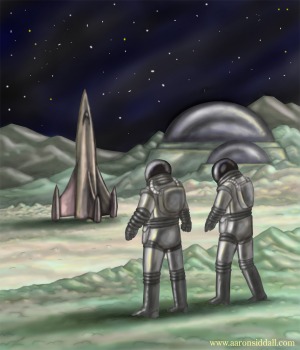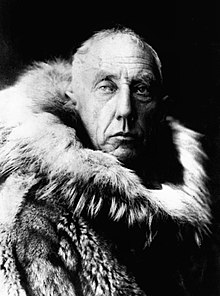 |
| The big world map |
While tinkering around with world concepts (something I do when sleep eludes me), I caught upon a concept that I feel needs exploring. The general concept is another world, peopled entirely by the descendants of shipwrecked people from our own world, past and present. The world itself will be warm, as with winter setting in I prefer to dream of warm to hot places, and home to magical creatures and animals that are endangered and extinct in our world.
As I continue tinkering, I am thinking that the Northwestern Europe thing in fantasy is waaaay overdone, I thought I would make it a fairly Asian-centric place, with a fair smattering on South Pacific Islands, Mediterranean, Middle-Eastern and some Central/South American elements too (for my purposes, the
Olmec Civilization was a seagoing power).
And so, as I tinker I have made a map, of which I am presently tinkering with a Western region presently named Tsuchi (Soo-Chee) by the predominant cultures. See below:
 |
| Closeup of the West |
As you can see, this map represents a pretty large area, with a great many places unspecified so that stories and games told here can fill them in as need be. No need to explain every corner right away! Any adventuring party should be fairly itching to go exploring.
Difficult Words: Some of the names seen here might be tricky for Americans to say. If such is the case, GMs should urge players to adopt simplified versions. If Avaiki is too difficult, say Avaki, Avi, or similar. Anything to smooth it along.
RELIGION AND CLERICS
 |
| All God's children got a place in the choir... |
The western lands (in fact all of the world of the setting) is home of an enormous pantheon of deities. I am breaking from the standard cosmology of more RPG settings in that ALL of the settings gods and goddesses are "Petty" deities, meaning that none of them are of greater power than a Celestial Paragon or Demon Lord. These powerful spirits are collectively powerful, but individually embody specific mountains, certain rivers, obscure concepts, animals, and all manner of oddities and concepts. This will allow for pretty personal cleric/deity relationships as well as potent local flavor.
In general, the gods are mostly pretty alien in mindset, and not really very good at communicating with mortals. Most of them are best left lumped together into broad categories of Lawful and Chaotic, with chaotic gods being in the majority (though being chaotic, they are less adept).
PRIESTS: The main division of Clerics are those who revere the Lawful gods (Lawful Clerics), those who revere Chaotic gods (Chaotic Clerics), and Druids. Clerics of specific deities are specialty priests, and take a domain rather than having any power over undead.
Below are a few examples of deities:
Azwa: Protector of Giant Stone Heads in the Wilderness. Azwa is a normally silent god, but can be demanding. Clerics of Azwa can turn air elemental creatures and rebuke earth elemental creatures.
Barae (The Sea Rose): Barae (bah-rah) is the goddess of the waves,
Orphium flowers, and patron of all who would cross the sea. Clerics of Barae are skilled in balance, climb and swim.
Grandfather Kogo (Kōgo Ue):
Kappa god of ponds and rivers. Hates visitors, preferring its solitude. Occasionally eats people, however they generally deserve it. Clerics of Kogo gain swim as a class skill, and can speak to turtles.
Lord Kotenbo (Crowfoot, Laughing Sword):
Daitengu god of martial arts, wild forests and enemy of vanity. Clerics of Kotenbo can use any weapon, and gain a +1 to damage when wielding swords.
Lady Mohin (Bringer of dead birds, Trilling Maiden):
Bakaneko (cat Henge) goddess of cats, vanity and revenge. Clerics of Lady Mohin are skilled at listen at doors, move silently and trickery.
Yuha (Offal One, He of The Mysterious Smells):
Akaname god of filth and gross monsters. Not nearly as bad as he looks or smells. Clerics of Yuha gains a +2 bonus to save vs. disease and is immune to Nausea.
LANGUAGES
Differing human languages of the land can make things pretty difficult. So lets say the magic of the land more-or-less translates the differing languages based on race/species. So there will be the following languages: Draconic, Elemental Tongues (Air, Earth, Fire, Metal, Water and Wood), Celestial, Common (trade language), Henge, Infernal, Obake, Oni, Tengu and Yokai (Fey). If you would prefer a more varied selection of human languages, add Arabic, Chinese, Japanese, Maori, Spanish, Tagalong, Greek, English and any others you might prefer.
PEOPLES OF TSUCHI
As this world is the place many lost ships have foundered over the centuries, the humans of the Western lands are a fairly diverse lot. Onto those shores have crashed Pirates (Chinese, Barbary, Caribbean, etc), Japanese fishermen, Polynesian Islanders, Phoenician Traders, Italian, Portuguese and Spanish Explorers, WWI and WW II soldiers (sailors, pilots, etc), Filipino people and African slaves from ancient times to more modern eras.
Though ethnically specific communities do exist, most of the human people of the Western lands have mingled over the years, and have mixed ancestry. The overall look is much like when Hollywood attempts at having a caste look ethnic enough to pass as being in a foreign country, regardless of what people in the intended country actually look like.
NON HUMANS
All manner of Non-Human races exist in the Western Lands, with a few living, working and fighting alongside human residents. Whether or not humans and non-humans get along is a different matter. Dwarves, Elves, Gnomes, Half-Elves, Half-Orcs, and Halflings are not available as player characters. This is partly because creatures of traditional western fantasy-fiction come with their own flavor regardless of the efforts of writers to change them. Also, I want other options for players.
Most of the non-humans are actually different types of Kami (spirits) akin to the many gods of the land (see religion and clerics), and can be strange. Of the races I will allow, I am choosing ones that are
fairly human in appearance and mentality, so they do not easily offend.
Details for creating player characters of these races require both the Blood and Treasure Players Handbook and the Blood and Treasure Keepers Tome (see
here for details).
As a GM, I am allowing the following races:
Hanyo (Assimar or Tiefling)
Creatures born of a mingling of human and spirit-creature are about as common os Half-Elves in most campaign settings. The Hanyo always show some aspect of their mixed heritage, though in an Asian culture, this might take many strange forms. As a general rule, those of celestial heritage will look like exceptionally beautiful and graceful humans. On the other hand, those of demonic heritage will often appear ugly or with animal features (fox ears, tails, claw-like hands etc).
AASIMAR (Celestial Blood): Aasimar characters modify their starting ability scores as follows: Wis +1, Cha +1. They have darkvision to a range of 60 feet and can cast
daylight 1/day and have resistance to electricity. Aasimar speak Common and might also know Celestial, Draconic, Elemental (Air or Water), Henge and Yokai. They can advance to 9th level in most classes, but have unlimited advancement as Clerics (Lawful), or paladins.
TIEFLING (Infernal Blood): Tiefling modify their starting ability scores as follows: Dex +1, Int +1, Cha -1. They have darkvision to a range of 60 feet. They can cast
darkness once per day and have resistance to fire. Tieflings have a knack for moving silently. They speak common and might also know Draconic, Infernal, Elemental (Fire or Metal), Henge, Obake and Oni. Tieflings can advance to a maximum of 9th level in most classes, but have unlimited advancement as thieves of Ninja (Monk variant).
Henge (Hengeyokai)
 |
| Badger and Fox Henge |
Henge are shapeshifting animals that can take on human or hybrid form. Such creatures are actually spirit beings (Yokai). Seven races of Henge are available as player characters, each with their own nature and culture, though all share a common tongue. Most Henge can and do live amongst humans undetected, though those with less pleasant animal and hybrid forms do so for dishonest reasons.
Henge live between worlds, having contacts with both the world of Kami (spirits/fey), animals and mortals. They can and do interbreed with humans, producing either Henge or Human children. They can also breed with normal versions of their animal side, producing animal or henge children. It is only when married to another Henge that they will always produce more Henge.
Details for character creation can be found
here.
Oni (Ogre)
Oni is a term that comprises several species of giant-kin. These creatures are a race of creatures related to both kami and to man. They are hideous, gigantic creatures with sharp claws, wild hair, and two long horns growing from their heads. They are humanoid for the most part, but occasionally, they are shown with unnatural features such as odd numbers of eyes or extra fingers and toes.

The term Oni can refer to a fairly wide range of giant humanoid creatures such as Ettins, Cyclops, Hill Giants, Ogre Mages, Ogres and Trolls. All of these creatures (and other besides) can and do interbreed in this campaign setting and are considered Oni. Most of these races are not available as player characters, as they are too powerful and inhuman in caste (and they eat people).
The only playable race of Oni are the Kimon-Oni. See below:
KIMON-ONI (Northern Ogre)
The Kimon-Oni or Kimon comprise the "common" populace of Oni. They resemble "regular" Oni, but have brown or red-brown skin and are more often Neutral than Chaotic. It is said that the Kimon-Oni are descended from mortals enslaved by the Ogre Magi in ancient times, and so they resemble men in demeanor to some degree. Kimon Oni are often found in the wilderness, but can occasionally be seen working as soldiers, bodyguards and even grunt laborers.
PLAYER CHARACTERS
Kimon-Oni modify their starting ability scores as follows: Str +4 (max. 20), Dex -1, Con +2, Int -2, Cha -2. They are large creatures, so must pay double the normal price for armor. Kimon-Oni have a natural slam attack that deals 1d6 damage. Kimon-Oni have darkvision to a range of 60 feet. They speak Oni. Their thick hides give them a +2 bonus to Armor Class. Kimon-Oni can advance as barbarians, clerics, fighters, sorcerers and thieves. Kimon-Oni cannot multi-class.
Half-Oni
Half-Oni are descendants of a Human and a Kimon-Oni parent, and so all of them are big and strong. Half-Oni look like particularly big humans, often having brutish or otherwise "ugly" features. Unlike Half-Ogres in most settings, a Half-Oni is far more likely to come from a mixed marriage, and so has had the benefit (or ill-luck) to be raised by both parents. Kimon-Oni are tough but good parents, but will usually encourage less than savory habits on their children.
PLAYER CHARACTERS
Half-Oni modify their starting ability scores as follows: Str +1, Con +1, Dex -1. They have darkvision to a range of 60 feet and a natural +1 bonus to Armor Class. Half-oni can speak Oni and Common and might also know infernal, henge or tengu. They can multi-class as cleric/fighters, fighter/magic-users and fighter/thieves.


























